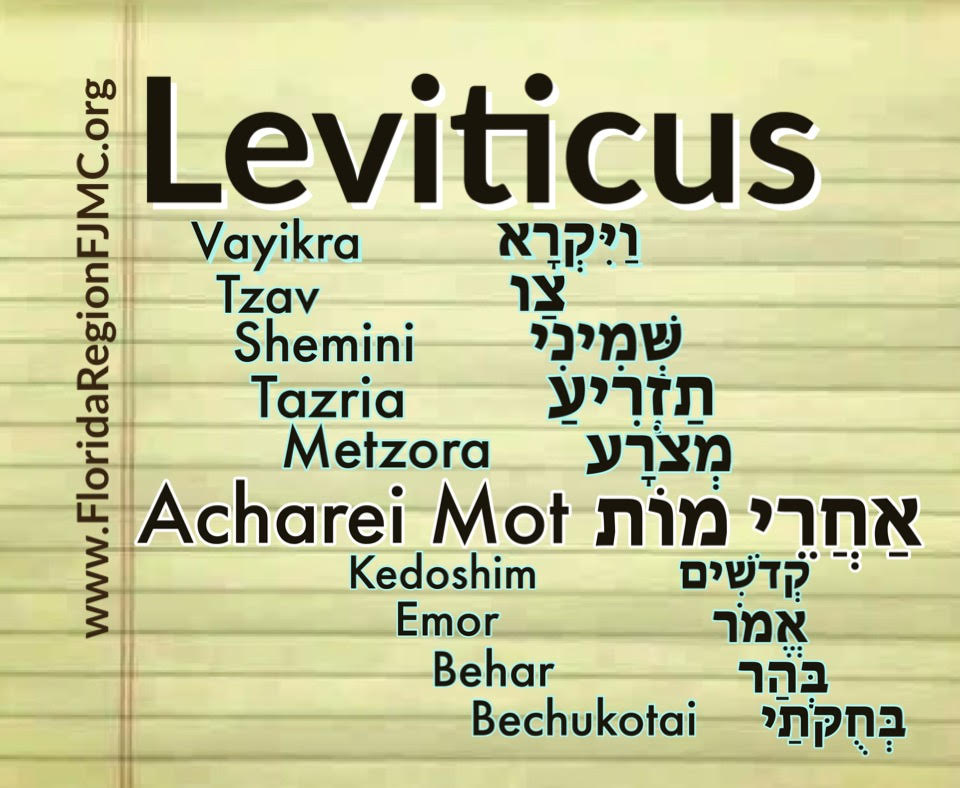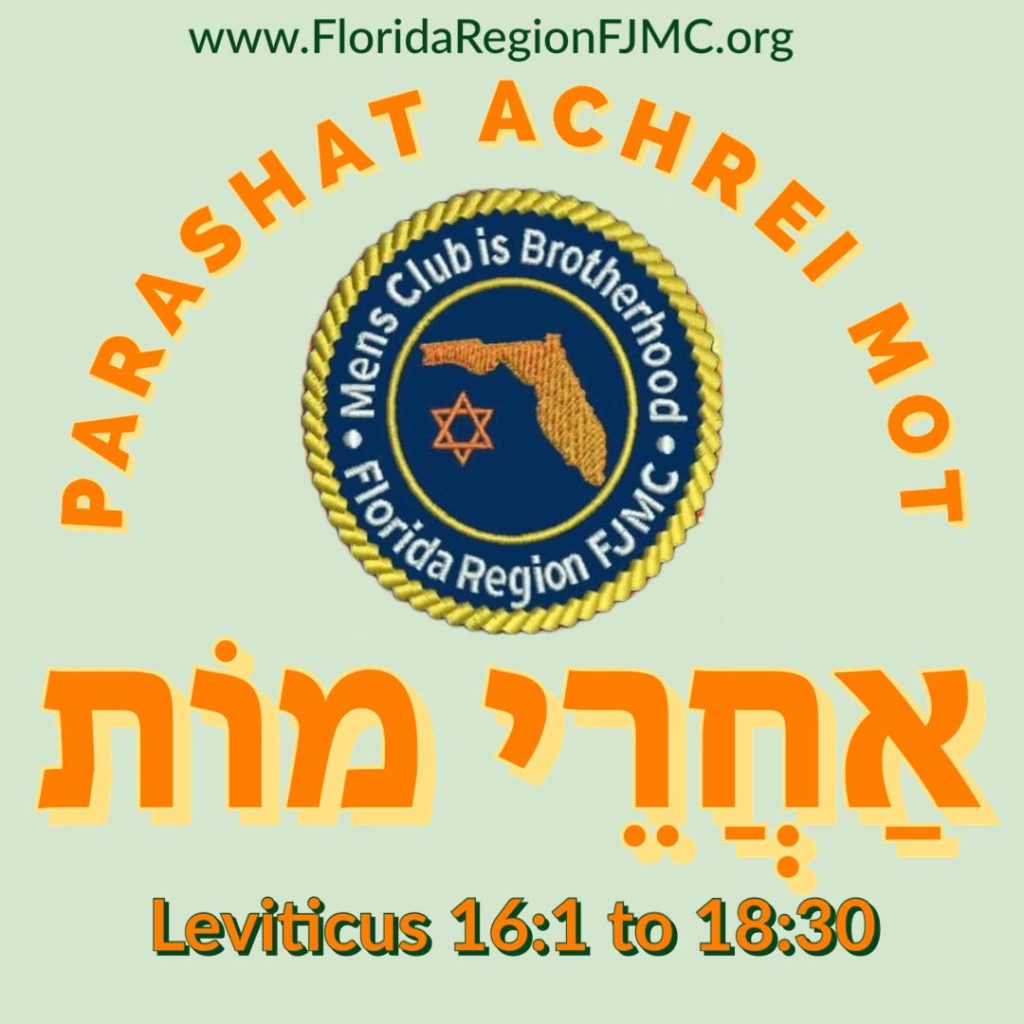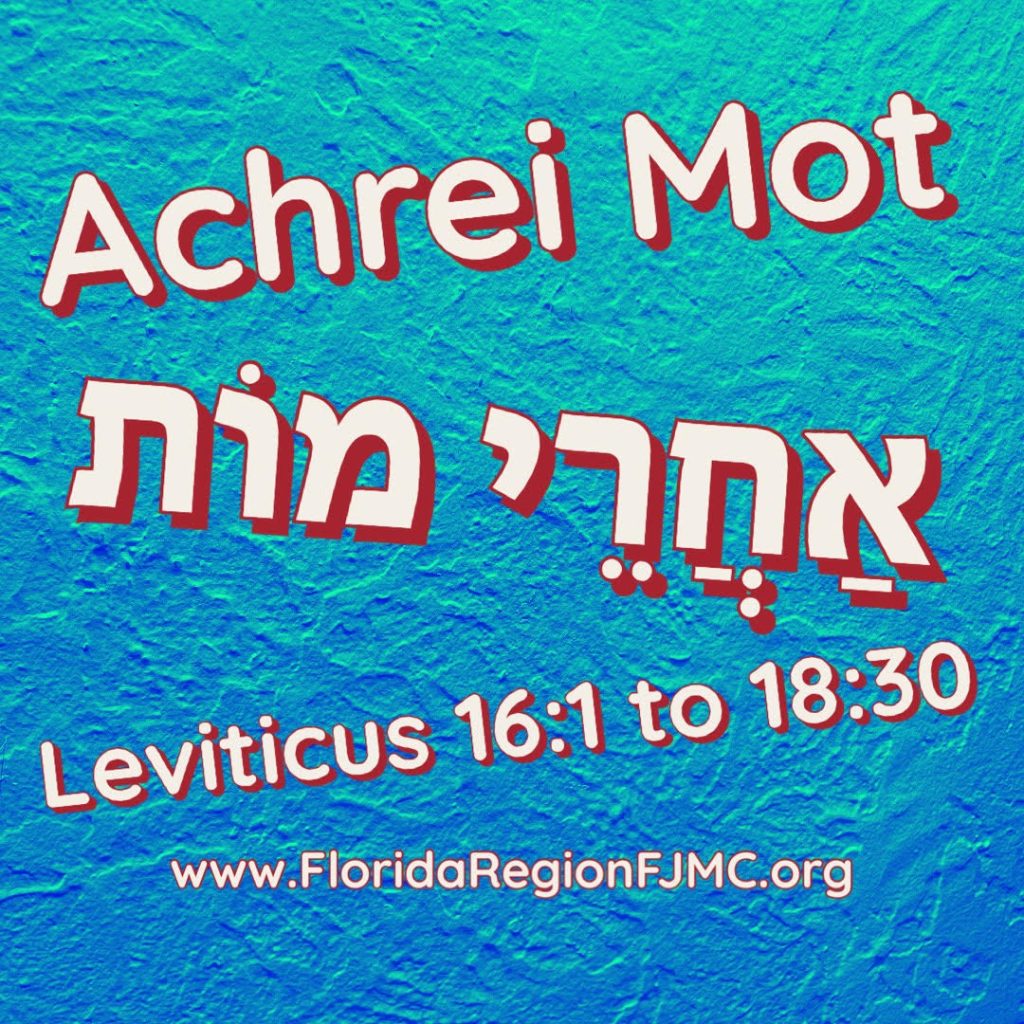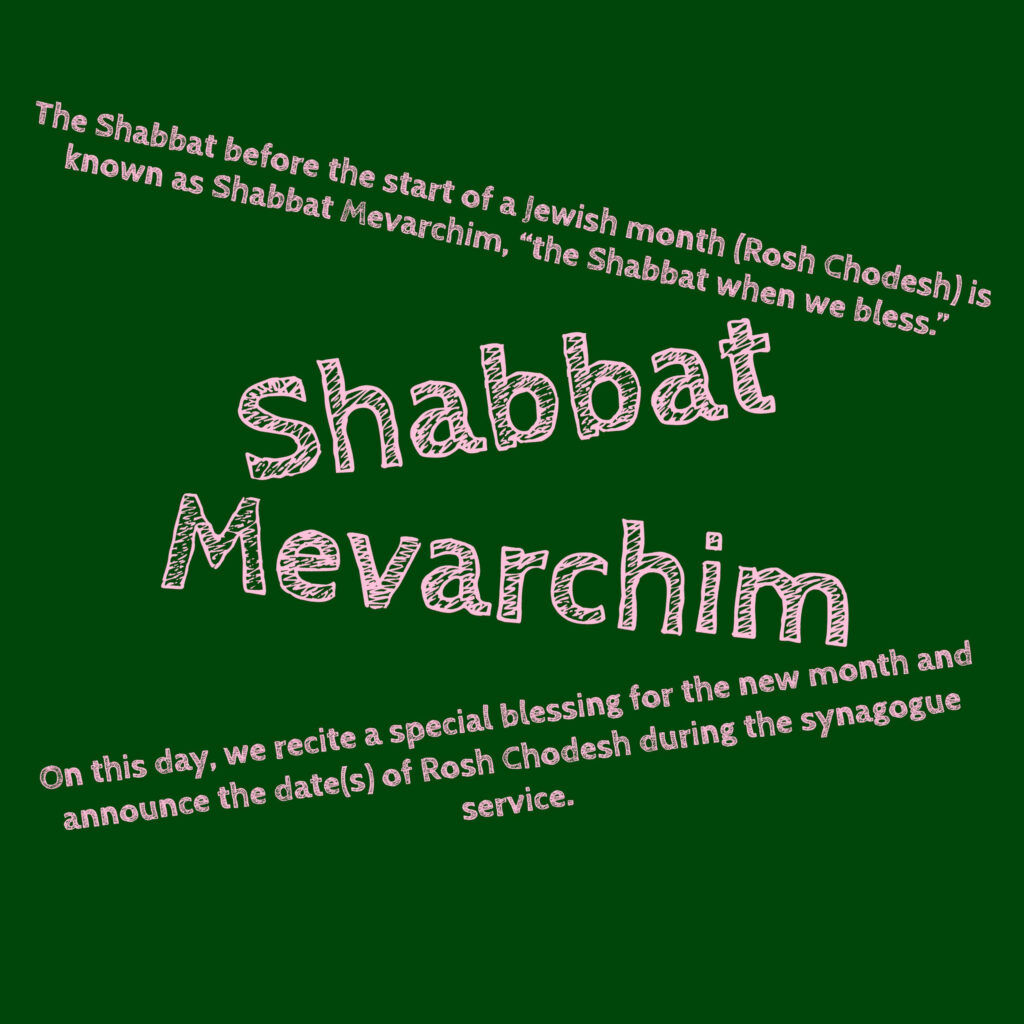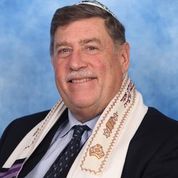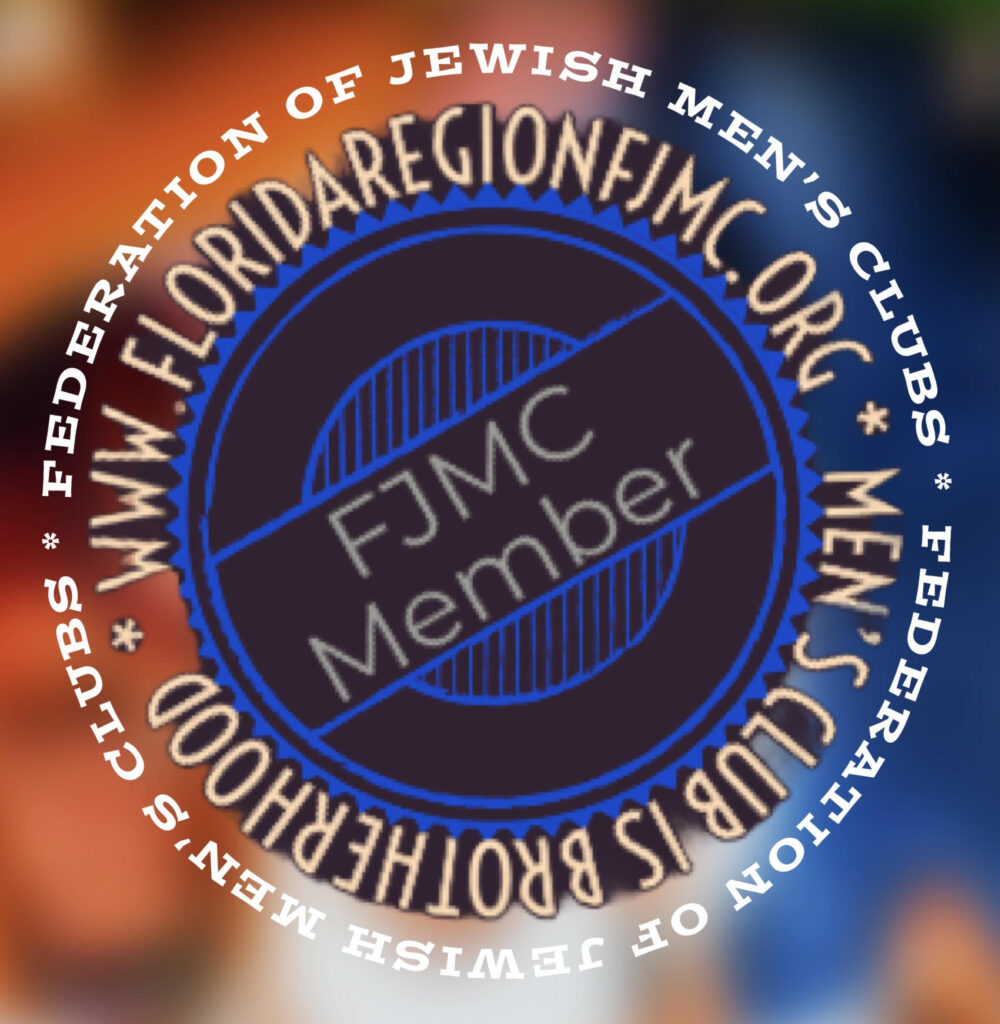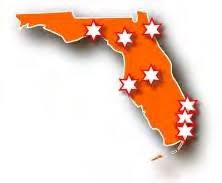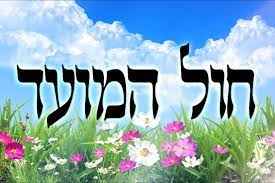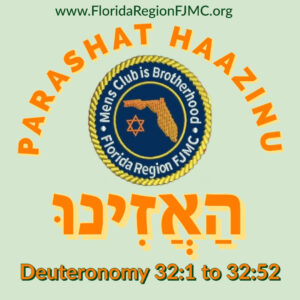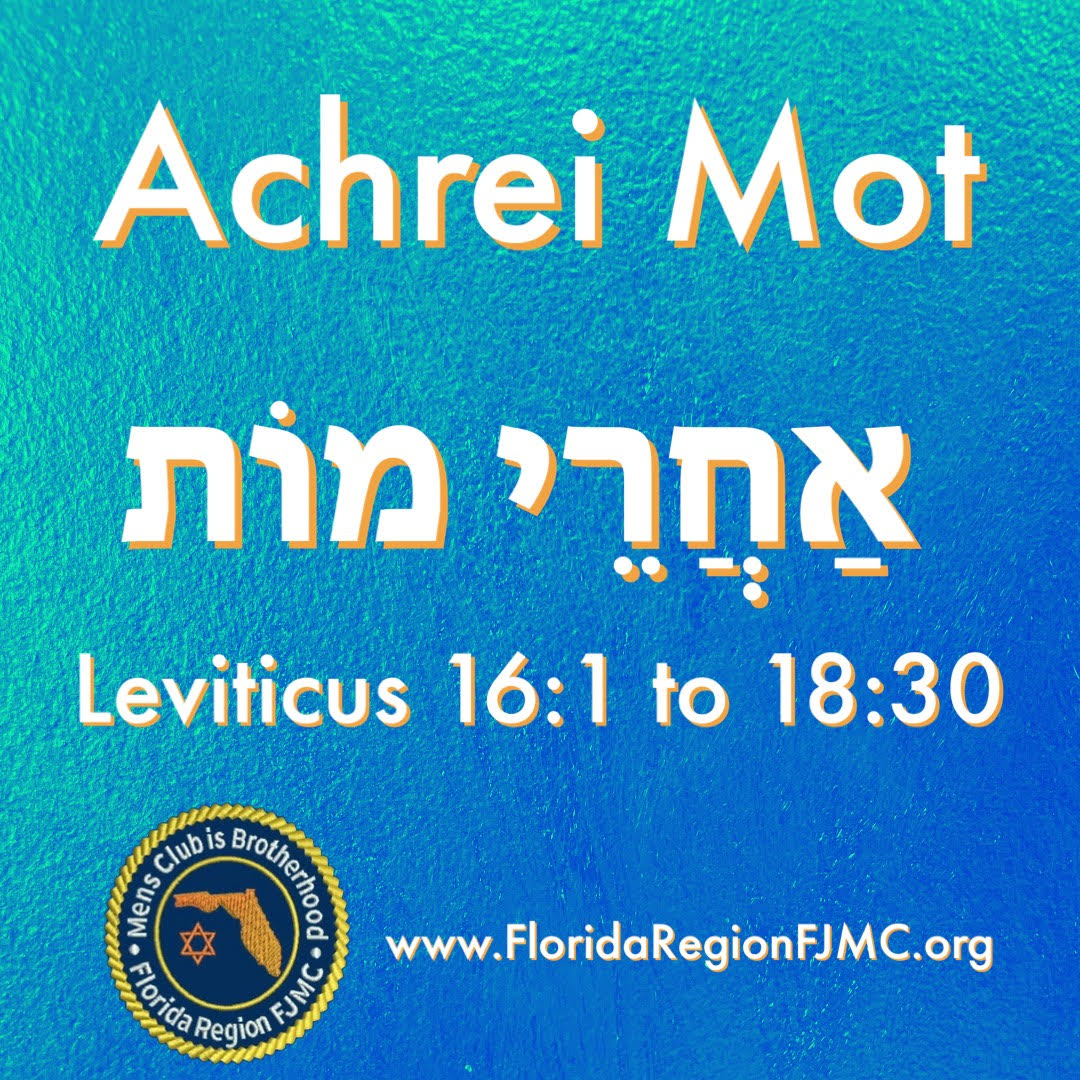
When you Choose Shabbat, you choose to learn that every Shabbat is different and special. This week I learned about Parashat Achrei Mot (אַחֲרֵי מוֹת), the 29th weekly Torah portion in the annual cycle of Torah readings.
According to Wikipedia, Achrei Mot (אַחֲרֵי מוֹת ), Leviticus 16:1 through 18:30, contains 4,294 Hebrew letters, 1,170 words, 80 verses and makes up 154 lines of the Torah scroll. Achrei Mot ( translated as “After The Death”) includes with a description of the ritual service of Yom Kippur, the Day of Atonement, details the prohibitions of offering sacrifices outside of the Mishkan (Tabernacle) and the eating of animal blood, as well as a list of forbidden sexual relations.
Rabbi Michael D Klein of Temple Torat Emet offers his insights on this week’s Torah reading, Achrei Mot for Shabbat May 4, 2024 aka 26 Nisan 5784:
“Just as it is sometimes difficult to follow the Torah in chronological order, this Torah reading is the logical continuation of Sedra Shemini, which occurred 4 weeks ago. It continues the narrative after the death of Aaron’s two sons, Nadav and Avihu and specifies the laws related specifically to the Kohanim. We are told that the Kohanim are held to higher expectations if they are to minister to the needs of the people and help atone for the sins of Klal Yisroel as well as diagnosing and helping in the cure of Nega Tzaraat.
The Kohanim are specifically told whom they may marry or are prohibited from marrying and that while serving as Kohanim they must avoid contact with any person or situation which would render them spiritually unclean. Furthermore, the Kohanim are told that the number of years that they may do their holy works are limited but they and their families will always be supported and cared for by Klal Yosroel out of gratitude for their years of service.
Also contained in this portion is a description of the Yom Kippur service by which the Kohanim atoned for their own sins and then the sins of their family and of the Congregation of Israel. Once each year the Kohain Gadol would approach the Holy of Holies to recite the ineffable name of G-d as he sought atonement for the sins of the people. We read the detailed description of this service in the Avoda service during Musaf on Yom Kippur.
An interesting question arises concerning the differences between the Kohain Gadol of the first Beyt Hamikdash compared to the Kohain Gadol of the second Beyt Hamikdash. The original Kohain Gadol was anointed with special pure olive oil known as Shemen Hamashuach (origin of the word Mashiach!). No such oil existed during the second Temple. How then was the Kohain Gadol of the second temple inaugurated into his service? The answer given by the Sages is that he was inaugurated by accepting and wearing the Holy Garments and Vestments proscribed by the Torah. This teaches us that one who is worthy of high authority must not only act the part but also must represent themselves in a dignified manner in order to show respect not only to Hashem but also to those he or she serves. This also teaches us that all may attain higher service but must be willing to accept the limitations of leadership by maintaining a moral and dignified life which serves as an example to Klal Yisroel of proper conduct privately and publicly.
Questions to discuss:
- Why does this Torah portion also establish laws of prohibited relationships for all Jews?
- What 3 aspects of Jewish life are emphasized in the Holiness Code part 1?
- Does the law of Levirate marriage (Chalitza) ever violate the laws of prohibited marriages? Why not?
- Who normally succeeds the Kohain Gadol after his service is complete? Are there any circumstances when this may not occur?”
Rabbi Michael D. Klein attended Yeshiva College of South Florida and served as Torah Reader, Hebrew teacher, Chazzan and spiritual leader of various synagogues throughout South Florida. In January 2015 he became Ritual Director, Bnai/Bnot Mitzvah instructor and 7th grade Hebrew instructor for Temple Torat Emet of Boynton Beach. In October 2019 he was accepted into an accelerated track and received his shicha from Yeshiva Adath Wolkowisk and has been the Rabbinic leadership of Temple Torat Emet since August 2020. In September of 2022 he was appointed Rabbinic and Spiritual Advisor of the Florida Region of FJMC.
Choose Shabbat; choose to celebrate, to light candles, sing songs and learn a little Torah.
This moment of Jewish Learning is brought to you by the Florida Region of the Federation of Jewish Men’s Clubs (FJMC). We are part of a confederation of over 200 Jewish Men’s Clubs and Brotherhoods representing over 20,000 members across the United States, Canada, Latin America, and beyond. Learn more about how your Jewish Men’s Club or Brotherhood can affiliate with the FJMC at: https://www.fjmc.org/content/affiliating-fjmc.
The Florida Region of FJMC serves the needs of affiliated Men’s Clubs and Brotherhoods throughout the State of Florida. Get to know more about the FJMC Florida Region and our growing network of Jewish Men’s Clubs and Brotherhoods at www.floridaregionfjmc.org and please visit and LIKE our Florida Region FJMC Facebook Group at www.facebook.com/FloridaRegionFJMC.
